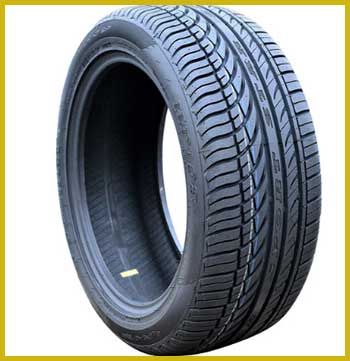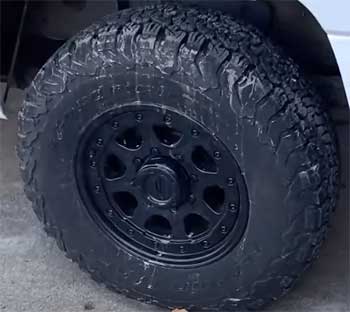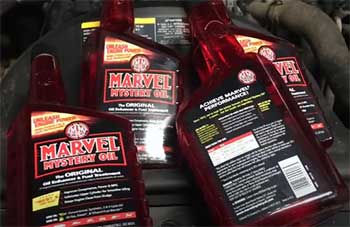When it comes to purchasing tires, many people tend to overlook the tire rating. It’s all too easy to just pick out a size that fits your car and move on.
However, there’s much more to it than just size. Two types of tire ratings you might come across are XL (Extra Load) and C (Commercial) rated tires.
In this article, we’ll dig deep into these two classifications, examine their pros and cons, and aim to answer some common questions about these types of tires.
A Brief Comparison Table
| Parameter | XL Rated Tires | C Rated Tires |
| Load Capacity | Increased load capacity compared to standard tires | Superior load capacity, designed for heavy loads |
| Construction | Reinforced with additional material in the sidewalls and tread | Robust construction with increased ply ratings or belts |
| Performance & Handling | Increased response and stability, suitable for high-performance vehicles | Strength and durability for heavy loads and tougher terrains |
| Comfort & Efficiency | Potential decrease in comfort and fuel efficiency due to stiffer construction | Potential decrease in comfort and fuel efficiency due to focus on load capacity |
| Cost | Might be more expensive than standard tires but potentially cost-effective for non-commercial use | Typically more expensive initially, but longer lifespan may offset cost for commercial use |
The Basics: What are XL and C Rated Tires?

Before we plunge into the intricacies, let’s start with the basics.
XL rated tires, also known as Extra Load, are designed to handle more weight than a standard tire of the same size.
The increased load capacity comes from their design: they have more material in the sidewalls and under the tread, which makes them a bit tougher and stiffer.
On the other hand, C rated tires, or Commercial tires, are specifically designed for light trucks, vans, and SUVs.
This rating is all about load carrying capacity, and C-rated tires are built to haul heavy loads. They are also typically more robust to withstand the demands of commercial use.
Also Read: Differences Between XL And LT Tires.
XL Rated Tires: The Pros and Cons
- Pros of XL Rated Tires
XL tires offer increased load capacity, meaning they can handle more weight than standard tires. This is useful if your vehicle frequently carries heavy loads.
Furthermore, XL tires generally provide enhanced performance, including better steering response and stability due to their stiffer construction. They’re often a good choice for heavier vehicles or those with high-performance specifications.
- Cons of XL Rated Tires
The downside of XL tires lies in their harder ride. Due to their stiff construction, they may not provide the smoothest ride compared to standard tires.
Another potential downside is that they might be more expensive, both in initial cost and fuel efficiency, as the added stiffness can increase rolling resistance.
C Rated Tires: The Pros and Cons
- Pros of C Rated Tires
C-rated tires excel in handling heavy loads, making them ideal for commercial vehicles. Their robust construction ensures they can withstand rough use without easily wearing out.
If your vehicle is used for commercial purposes, regularly carries heavy loads, or travels on rough roads, C rated tires might be your best bet.
- Cons of C Rated Tires
The primary disadvantage is their stiffer ride, similar to XL tires. They can also be more expensive initially, although their durability might offset the initial cost over time.
Additionally, the increased rolling resistance may result in reduced fuel efficiency.
Key Differences between XL and C Rated Tires
When choosing tires for your vehicle, it’s essential to understand the specifics, especially if you’re weighing options between XL and C rated tires.
They may seem similar at first glance, but they’re designed for different use cases and offer varying benefits and drawbacks. Let’s dive into the key differences in detail.
- Load Capacity and Construction

One of the main differences between XL and C rated tires is their load capacity and overall construction.
XL rated tires, as their name suggests, are designed to handle ‘extra load’.
They can carry more weight than a standard tire of the same size.
This extra load capacity comes from additional material in the sidewalls and under the tread, reinforcing the tire structure.
XL tires are often chosen for heavier passenger vehicles or those with high-performance specifications.
On the other hand, C rated tires, often referred to as ‘commercial’ or ‘cargo’ tires, have an even higher load capacity. They are usually designated for light trucks, vans, or SUVs that are used commercially or carry heavy loads regularly.
The load carrying capacity comes from the tire’s reinforced structure, which usually includes increased ply ratings or a higher number of belts.
- Performance and Handling
The performance and handling characteristics of XL and C rated tires also vary.
XL tires are stiffer due to their reinforced construction, which provides an increased level of response and stability. This rigidity might improve high-speed handling, making them suitable for vehicles with higher performance requirements.
C rated tires, due to their load-bearing focus, prioritize strength and durability. They may not provide the same level of handling response as XL rated tires, but their robust construction ensures they can withstand the demands of carrying heavy loads and tackling tougher terrains.
- Comfort and Efficiency
Comfort and efficiency are other areas where the differences between XL and C rated tires become evident.
Because of the additional material and stiffer construction, XL tires may provide a harder ride compared to standard tires. The increased rolling resistance might also have an impact on fuel efficiency.
C rated tires, given their focus on load capacity and durability, also offer a stiffer ride. The trade-off for their load-carrying capability and durability might be a decrease in comfort and a potential increase in fuel consumption due to higher rolling resistance.
- Cost
Lastly, cost is another area where differences are evident.
XL tires, due to their enhanced load capacity and performance characteristics, might be more expensive than standard tires. However, they could offer a more cost-effective solution for non-commercial heavy load carrying compared to C rated tires.
C rated tires, given their superior load-carrying capacity and durability, are typically more expensive initially. But for commercial use and frequent heavy load carrying, the longer lifespan may offset the higher upfront cost over time.
Also Read: Comparison of Falken RT660 And RT615K Tires.
Frequently Asked Questions (FAQ)
No, an XL rating doesn’t change the size of the tire, it simply indicates that the tire can handle extra load compared to a standard tire of the same size.
Yes, if you have a larger vehicle, frequently carry heavy loads, or if your vehicle’s manufacturer recommends them. Remember, comfort might be compromised due to the stiffer ride.
The main drawbacks are a potentially harder ride due to stiffer construction and possibly higher costs in terms of purchase price and fuel efficiency.
C rated tires are typically designed for light trucks, vans, and SUVs that are used for commercial purposes or regularly carry heavy loads.
Final Thoughts
To wrap it up, the choice between XL and C rated tires depends largely on your vehicle usage. For everyday cars that don’t regularly carry heavy loads, a standard or XL tire might be the best option.
However, for commercial vehicles or those that frequently carry heavy loads, a C-rated tire could be the way to go. It’s always a good idea to consult with a professional tire dealer to ensure the best tire choice for your specific needs.

